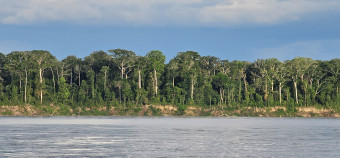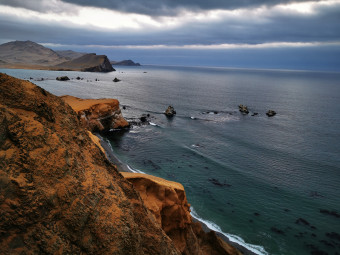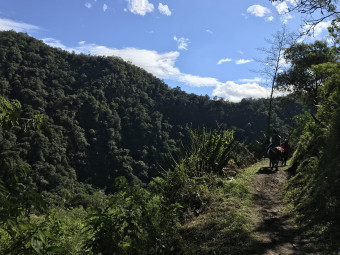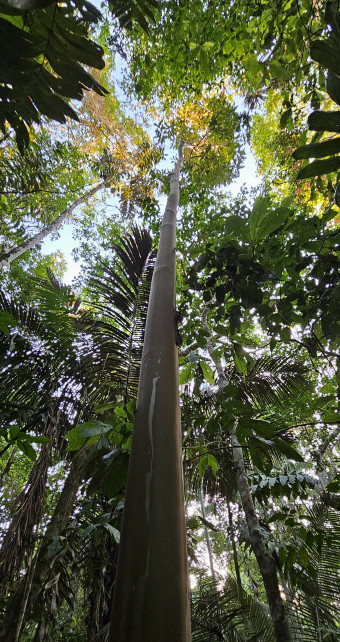The most important means of conserving biodiversity is by protecting species in their natural habitats and native environments (in-situ conservation). Measures taken by governments for conservation in-situ include establishing nature reserves, national parks or other similar designations where disturbance to wildlife, including from tourism, harvesting, pollution and other human activities, can be controlled to varying degrees.
Under Article 8 of the UN Convention on Biological Diversity (CBD), parties to the Convention are required to establish a system of protected areas with appropriate systems in place for their selection and management. Parties are also required to ensure that activities outside protected areas do not lead to damage within those areas. In many places, these aims are achieved through strict regulation of human activity, often through legislation and with varying forms of monitoring and enforcement.
By conserving living systems in this way, protected areas can also help to sustain and restore ecological integrity, safeguarding the ecosystems and their services which are essential to health and well-being – for example, supporting populations of pollinators, crop wild relatives and medicinal resources, providing areas for recreation and cultural enhancement, and preserving ecological functions involved in regulating air and soil quality, the flow of water through the landscape, and other essential contributions to human well-being.
Protected areas can contribute significantly to sustainable development and poverty reduction by preserving the primary health and economic resources of local communities, by reducing health risks (such as disease emergence) which could have a much wider geographic impact, and as important sources of tourism revenue. In many cases people are an essential element of the ecosystem and contribute directly to conservation and maintaining ecosystem function. Indigenous and local communities can play a vital role as stewards of biodiversity, especially in ecosystems associated with their home territories.
The people responsible for managing, protecting and monitoring protected areas, including wildlife rangers, indigenous peoples and local communities, can be seen as the front line in protecting the ecosystem services we depend on for health and well-being, including by supporting One Health approaches.
Excluding people from all or some of a protected area or restricting certain activities in order to protect vulnerable wildlife populations may sometimes be considered an essential conservation measure. Conservation efforts involving such strict protection of designated areas or species can lead to conflict with local communities if those programmes can affect their access to particular aspects of biodiversity or ecosystem services, particularly where certain species, habitats, or landscapes have social, cultural or economic importance for those communities. Article 8(j) of the CBD requires Parties to the convention to “respect, preserve and maintain knowledge, innovations and practices of indigenous and local communities embodying traditional lifestyles relevant for the conservation and sustainable use of biological diversity”. One of the intentions of this provision is to ensure that conservation measures do not harm the ability of indigenous peoples and local communities to maintain their livelihoods in areas to be designated for conservation, and to further protect their fundamental rights.
However, there have been circumstances where the establishment or management of protected areas has involved the exclusion or expulsion of local communities as a strict means of protecting species or habitats, often when run by private conservation organisations (including some NGOs). In some circumstances indigenous peoples or local communities have been forced to leave their ancestral homes and the ecosystems upon which their cultures and livelihoods depend. This has reinforced colonial harms and added to the burden of discrimination, displacement and rights abuses faced by many indigenous communities around the world, often running contrary to the principles of the UN Declaration on the Rights of Indigenous Peoples. It also goes against the considerable evidence which shows that ecosystems in lands managed by indigenous peoples and local communities are more resilient and tend to experience less species decline than other areas.
From 2022 to 2024, the UN Environment Programme oversaw a multi-stakeholder consultation effort to explore the interface between conservation, protected areas management and human rights. The process resulted in the publication of the Core Human Rights Principles for Private Conservation Organisations and Funders in 2024, noting that to be successful, “efforts to conserve nature must recognise the rights and contributions of those whose ways of life contribute to its protection. In particular, the rights and methods of managing and conserving nature of Indigenous Peoples, Afro-descendant and other tribal communities, and peasants should be prioritized”
Recognising the role of these communities and their associated knowledge systems is a key element of sustaining the contributions of protected areas to human health and well-being.



